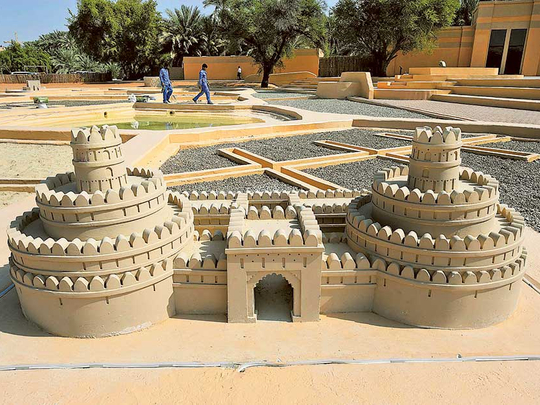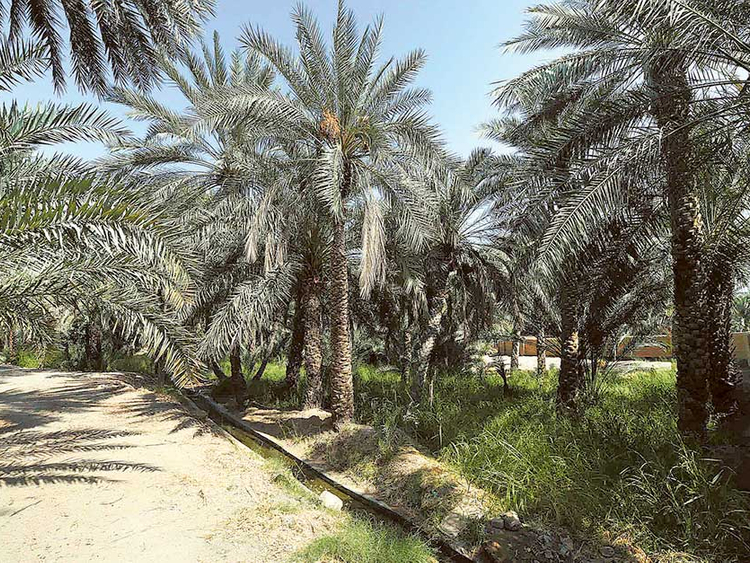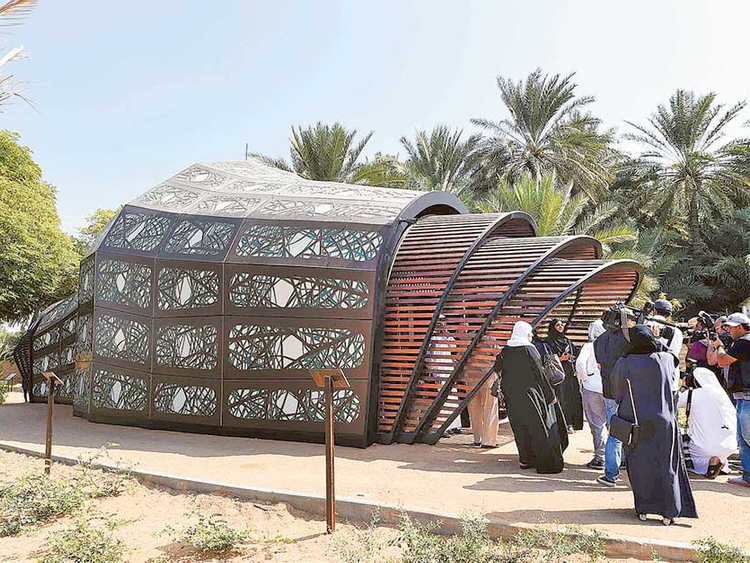
Abu Dhabi: Containing over 147,000 palm trees, 550 farms, and inhabited for over 4,000 years, Al Ain Oasis, which has been listed by Unesco as a World Heritage Site, offers a telling look into the history and lives of Emiratis and their ancestors.
The oasis, which covers more than 1,200 hectares, was officially opened to the public on November 3, with the media given an exclusive tour of the oasis and its sites on Tuesday to gain an insight into what visitors can expect.
The heritage site which contains the main oasis, also features a number of other attractions, such as the Shaikh Zayed Palace Museum, the Eco Centre, the Oasis Garden, and the West Gate Exhibition. Each section offers its own unique story on the history and traditions of Al Ain and the oasis.
Committed to respecting the natural and communal significance of this Unesco World Heritage Site, Tourism and Culture Authority Abu Dhabi has ensured that opening the oasis to visitors entails a low environmental impact while it enables them to learn, observe and interact with the site.
Eco Centre
Should visitors want to get the complete history of the area and its formation — which dates back to the Stone and Bronze Ages, the Eco Centre is the place to start [before going into the main oasis area]. With its central cladding that mimics interlocking palm branches and its use of eco-friendly materials, the Eco Centre pays homage to the palm canopy of the oasis.
“The Eco Centre is an educational place where visitors can understand more about the Al Ain Oasis and the importance of its sites,” explained an official guide.
“The information is given in an interactive, easy to understand way through touch screens that pictorially explain the time periods of this area as well as changes it has undergone.”
West Gate Exhibition
The exhibition takes visitors on a step by step guide on the watercourse system, or falaj as its called in Arabic, demonstrating how the water is made to sustain the oasis. Three falaj systems have been in use for more than 3,000 years, said a guide, and also one of the oldest systems to have been discovered in the UAE.
The Al Ain Oasis
The main spectacle of the heritage site is undoubtedly the oasis site itself, which is rich with palm trees. Many of the trees have been standing for several hundred years.
The farm areas in the oasis also contain historical building structures, such as the old palace of the late Shaikh Zayed Bin Sultan Al Nahyan, and old mosques — one of which dates back at least 200 years.I n addition to these, the underground irrigation system is also in plain view, allowing visitors to see and understand how the oasis is giving life to vegetation.
A selection of food and beverage outlets can be enjoyed along the nearby Al Ain Oasis Plaza where local produce and traditional products from the oasis can be purchased. The minimalistic Plaza buildings are meant to blend into the oasis landscape.
Al Ain Oasis Unesco World Heritage Site is open to the public daily from 9am to 6pm. Cafes and shops are open until 9pm.
Unesco World Heritage Sites are areas and landmarks based on their cultural and historical significance, and are protected by international treaties which call for their preservation as part of humanity’s heritage.
Al Ain Oasis
Over 4,000 years old
550
farms
147,000
palm trees
1,200
hectares, the area it is spread over











